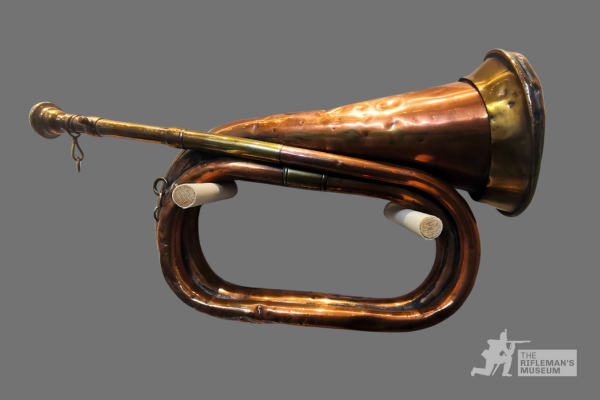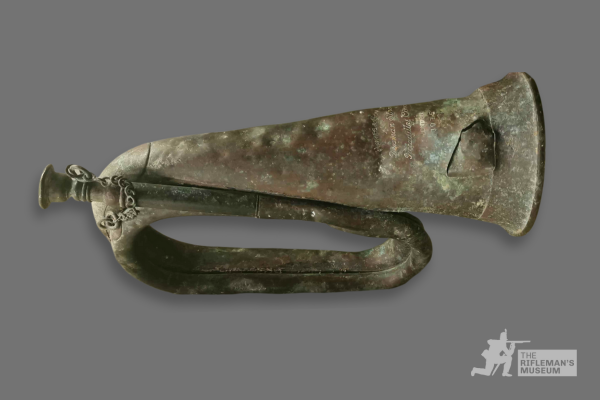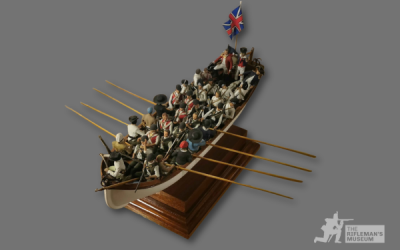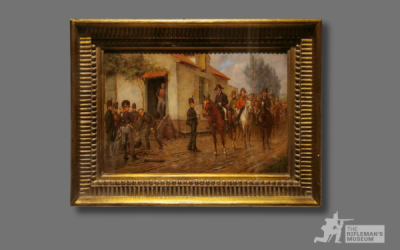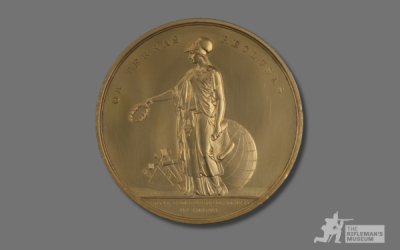Item details: Brass bugle with makers mark of a trumpet bearing a bannerincorporating ‘TRADEMARK DISTIN, underneath ‘BOOSEY & CO MAKERS, 295 REGENT ST, LONDON’. The instrument has some dents and damage, particularly on the bell, and the mouthpiece chain is broken.
About the Item
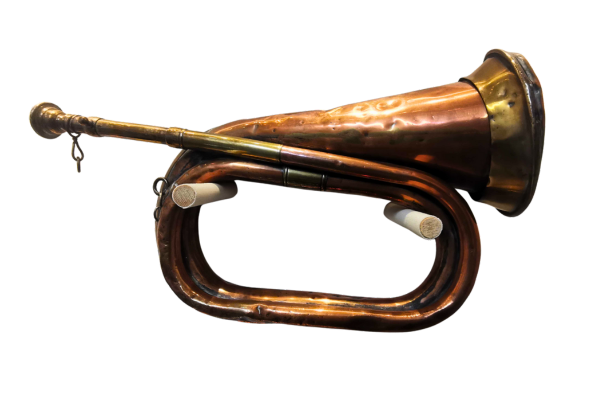
This bugle was made sometime between 1874-1884 and issued to Bugler Coker of the 1st Battalion King’s Royal Rifle Corps, who carried it during one of the most famous actions of the Sudan Campaign: the Battle of Abu Klea in January 1885. Serving with the rifle company of the Mounted Infantry Camel Regiment, Coker used this instrument to sound battlefield orders.
Unlike the regular line infantry, which relied on drums for signalling, the rifle regiments historically used bugles, which could be heard over much longer distances. The bugle’s clear call became a defining symbol of the rifleman, a tradition still honoured today in the cap badge of The Rifles.
About the Battle of Abu Klea
In 1884, a Sudanese uprising led by Mohammed Ahmed—the self-proclaimed Mahdi, or messiah—threatened Egyptian and British control in the region. Sent to oversee the evacuation of Egyptian forces, General Charles Gordon instead fortified Khartoum, where he was soon besieged by Mahdist forces.
Public pressure in Britain led to the Gordon Relief Expedition to save General Gordon, commanded by General Wolseley. Among its ranks in the Mounted Infantry Camel Regiment were men from the 3rd Battalion King’s Royal Rifle Corps and the Rifle Brigade. Bugler Coker acted as bugler for this Rifle Company.
At Abu Klea, on 17th January 1885, the British square faced a massive assault from Mahdist warriors. The enemy gained entry into the square but were repulsed, taking heavy losses. Although the battle was a hard-won victory, the relief force ultimately came too late and Khartoum fell two days before the expedition arrived.

